It’s nearing mid-autumn festival 中秋节 again. Locally known as the Mooncake festival in Southeast Asia, this is the time of the year when people gather to eat mooncakes together with family and loves ones, while admiring the full moon, sipping Chinese tea, kids playing around with paper lanterns (in the good old days) and folks gathering around to chit chat or solve festive riddles. Mid-Autumn Festival falls on the 15th of the 8th lunar month in the Chinese calendar every year. In the ancient times, this is also the day when people offer their appreciation to the fall harvest, pray for longevity and prosperity.
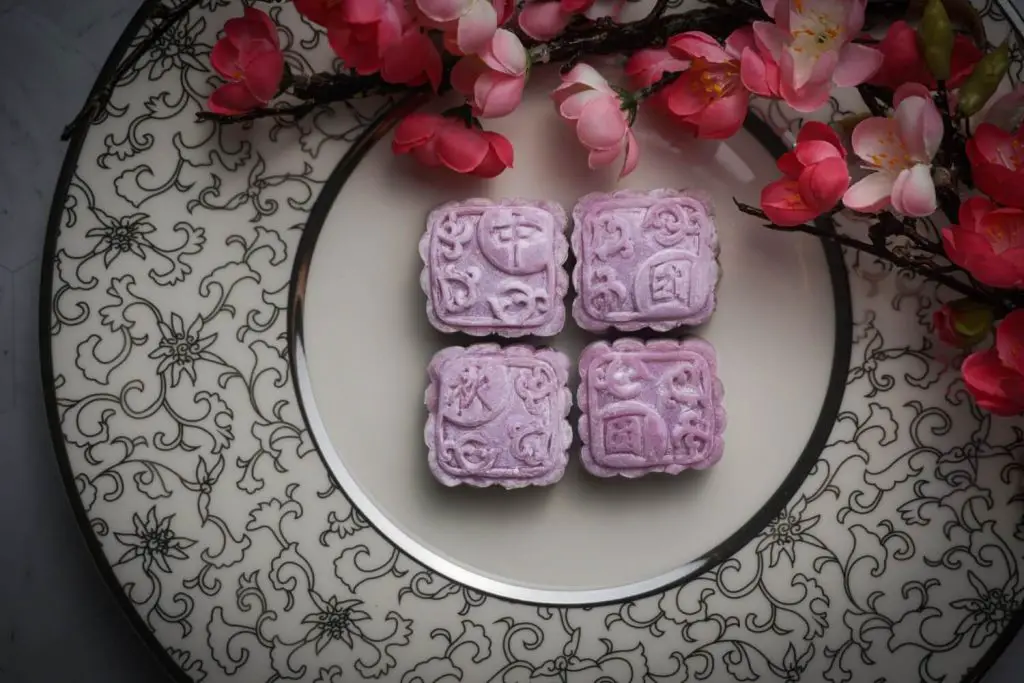
Mooncake these days come in all sorts of shapes and form, such as this fruity jelly mooncake, the classic Cantonese style mooncake, and of course the ever-popular snow skin mooncake. The snow skin mooncake is made of glutinous rice flour, and has a texture very similar to mochi or daifuku. It’s best to serve cold and will remain soft and smooth for a few days if stored in the fridge.
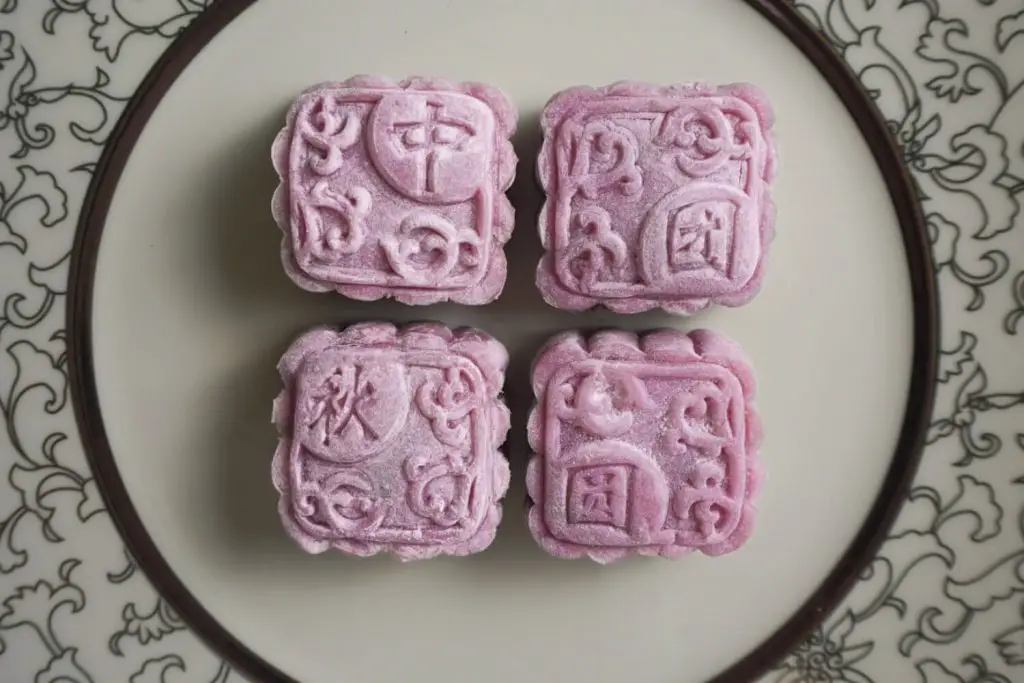
Snow skin mooncakes generally are known to contain lesser calories compared to the traditional baked ones. However, this is largely dependent on the type of filling used. For example durian filling wrapped with snow skin can contain over 1000 kcal of calories. In this recipe, I substituted sugar with Stevia sweetener in the dough skin. For the paste filling, I used two highly nutritious root vegetables – taro and purple sweet potato, adding an optional Stevia sweetener for seasoning, you can choose to opt out the sweetener or add more according to your preference. As I’m also slightly lactose-intolerant, I substituted milk with lactose-free milk and butter with dairy-free butter.
Taro, also known as yam in Asia, is a type of vegetable root that can be used in both sweet and savoury dishes. Among the many health benefits, the carbohydrate content in taro, a resistant starch, has been shown in clinical studies to stabilise blood sugar, helps with weight management and may even reduce the risk of diabetes, making it suitable for keto and low-carb diets.
Sweet potatoes with purple flesh are not only pretty in colour, it’s extremely high in its nutrition content. They contain beta-carotene and anthocyanins which are naturally occurring plant phytochemicals that give vegetables their bright colors. Anthocyanins have been linked to decreased risk for many chronic diseases.
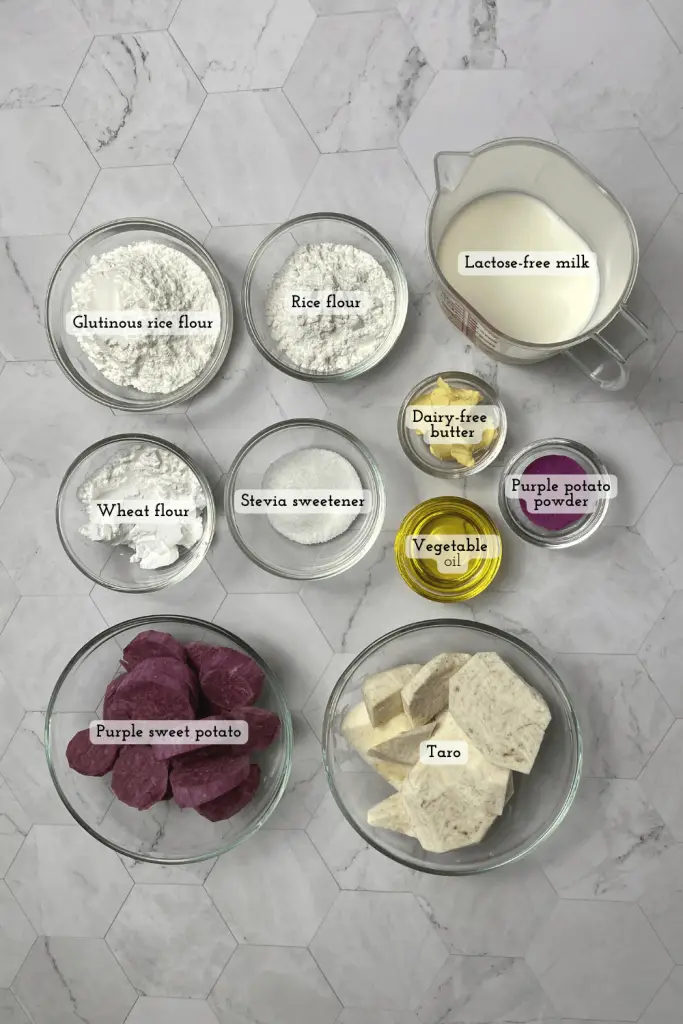
Tips on making the snow skin mooncake
- Powdered colouring works better than liquid colouring in this recipe. I tried to use 10ml beetroot juice for the colouring, adding to the dough mixture before steaming, the dough turned out yellow. Then I added another 10ml beetroot juice to the steamed dough and kneaded the colour in, it became a flesh colour which is not very appealing.
- I used half portion of taro and half portion of purple sweet potato. You can use all purple sweet potato without taro and it’ll still taste great.
- When handling taro, be sure to wear gloves as it contains calcium oxilate which can cause skin irritation, I often feel a stinging sensation in my hands when peeling and cutting it without glove protection.
- You can pre-make the snow skin dough and the paste filling a day earlier and assemble the next day. It’ll still be soft and delicious.
- It is highly recommended to store the snow skin mooncake in an airtight container in the fridge for few hours before consuming. The snow skin mooncake is good for consumption if stored in the fridge for up to 3 days.
Watch how to make snow skin mooncake on YouTube
Pin now, make later
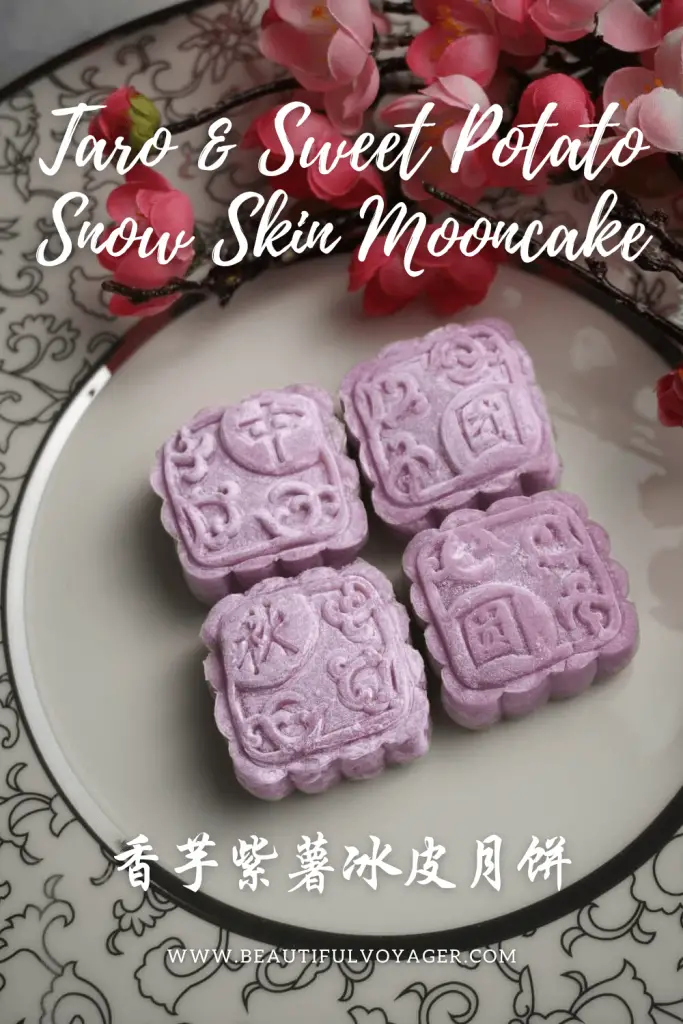
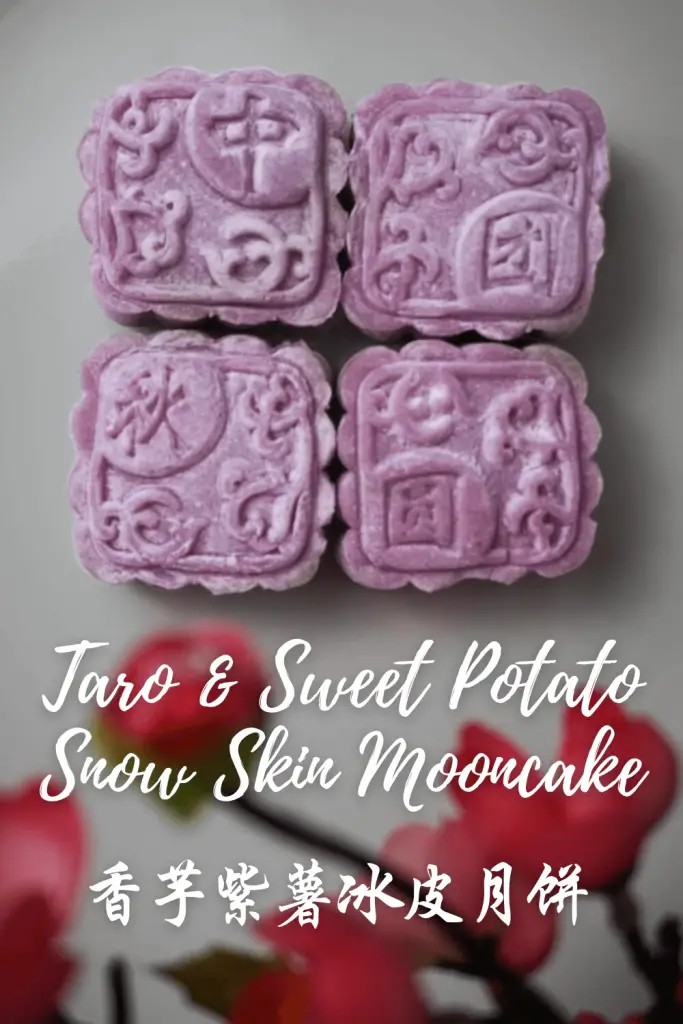
Snow Skin Mooncake 香芋紫薯冰皮月饼 (Taro & Purple Sweet Potato)
Ingredients
Snow skin dough
- 200 ml milk I used lactose-free
- 20 g Stevia sweetener or castor sugar
- 20 g unsalted butter I used dairy-free
- 50 g glutinous rice flour
- 40 g rice flour
- 25 g wheat flour
- 5 g purple potato powder
Taro & purple sweet potato paste filling
- 100 g purple sweet potato
- 100 g taro
- 20 g vegetable oil
- 50 g Stevia sweetener optional, season to taste
- 100-150 ml water
Others
- 20 g glutinous rice flour to make gao fen or cooked glutinous rice flour
Instructions
Make gao fen or cooked glutinous rice flour
- Fry 20g of glutinous rice flour in a non-stick pan over low heat until it turns slightly yellowish. Set aside and let it cool for later use. This will be used to coat the snow skin for moulding.20 g glutinous rice flour
Make the snow skin dough
- Place 50g glutinous rice flour, 40g rice flour, 25g wheat flour, 20g Stevia sweetener, 5g purple potato powder in a large mixing bowl. Whisk to combine well.50 g glutinous rice flour, 40 g rice flour, 25 g wheat flour, 5 g purple potato powder, 20 g Stevia sweetener
- Add 200ml milk progressively while mixing with a whisk. Mix until all dry ingredients are invisible. Transfer the mixture into a heat-proof dish for steaming.200 ml milk
- Boil water in steamer. Once the water boils, steam the snow skin dough mixture on medium high heat until dough is formed, about 15-25 minutes.The steamed dough should be firm to the touch. There will be some liquid on top of the dough and that's okay.Remove the steamed dough from steamer, let the temperature reduce to warm.
- Wear a plastic glove for easier handling. Rub 20g unsalted butter into the dough until well mixed. If dough is sticky, add some more butter or vegetable oil. Cover with cling wrap and chill in fridge for at least 30 minutes. Yields about 330g dough.20 g unsalted butter
- Once chilled, divide the dough into equal portions and roll into balls. Keep the dough covered to prevent drying out. Note: Wear plastic gloves and coat with some cooked glutinous rice flour for easy handling. I'm using a 50g mould so I used 25g paste filling with 25g snow skin dough. You can adjust the ratio according to your preference.
Make the taro & purple sweet potato paste filling
- Peel and cut into smaller pieces 100g purple sweet potato and 100g taro. Place into a heat-proof dish.Steam on high heat until softened for about 15-20 minutes. Mash with fork. Optional to use 200g purple sweet potato without Taro or 200g taro without purple sweet potato.100 g purple sweet potato, 100 g taro
- Transfer into a blender. Add 100-150ml water and blend until the mixture turns into a smoothie-like consistency.100-150 ml water
- Using a non-stick pan on medium-low heat, transfer the taro and sweet potato mixture in. Stir constantly and add 20g vegetable oil progressively until oil is absorbed. Do a taste test, stir in 50g or more Stevia sweetener (or sugar) according to your taste preference. If the mixture starts to simmer, reduce heat to low and keep stirring until it thickens. Paste is ready when it’s not sticky and becomes thick paste-like consistency. Takes about 15-20 minutes.20 g vegetable oil, 50 g Stevia sweetener
- Transfer the paste into container and let it cool. Then cover and store in the fridge until ready to use. Divide the paste into equal portions and roll into balls. Keep the paste covered to prevent drying out. Note: I'm using a 50g mould so I used 25g paste filling with 25g snow skin dough. You can adjust the ratio according to your preference. Yields about 200g paste.
To assemble the snow skin mooncake
- Set aside snow skin dough and paste fillings rolled and shaped into balls.
- Flatten each dough into a big round shape. Place a ball of paste filling in the middle and wrap it around with the snow skin dough. Then roll the wrapped mooncake into a ball shape.Note: wear plastic gloves for easy handling. See my YouTube video on how to wrap.
- Lightly dust the mooncake and mould with some cooked glutinous rice flour with a brush.
- Carefully fill the mould with the mooncake. Place on the table to shape the mooncake. Remove the mooncake from the mould quickly.
- Dust off the excess flour from the shaped mooncake to reveal the patterns on the mooncake and to prevent the flour from drying out the snow skin.
- Store in an airtight container in the fridge 1-2 hours before consuming. Enjoy your mid-autumn festival!

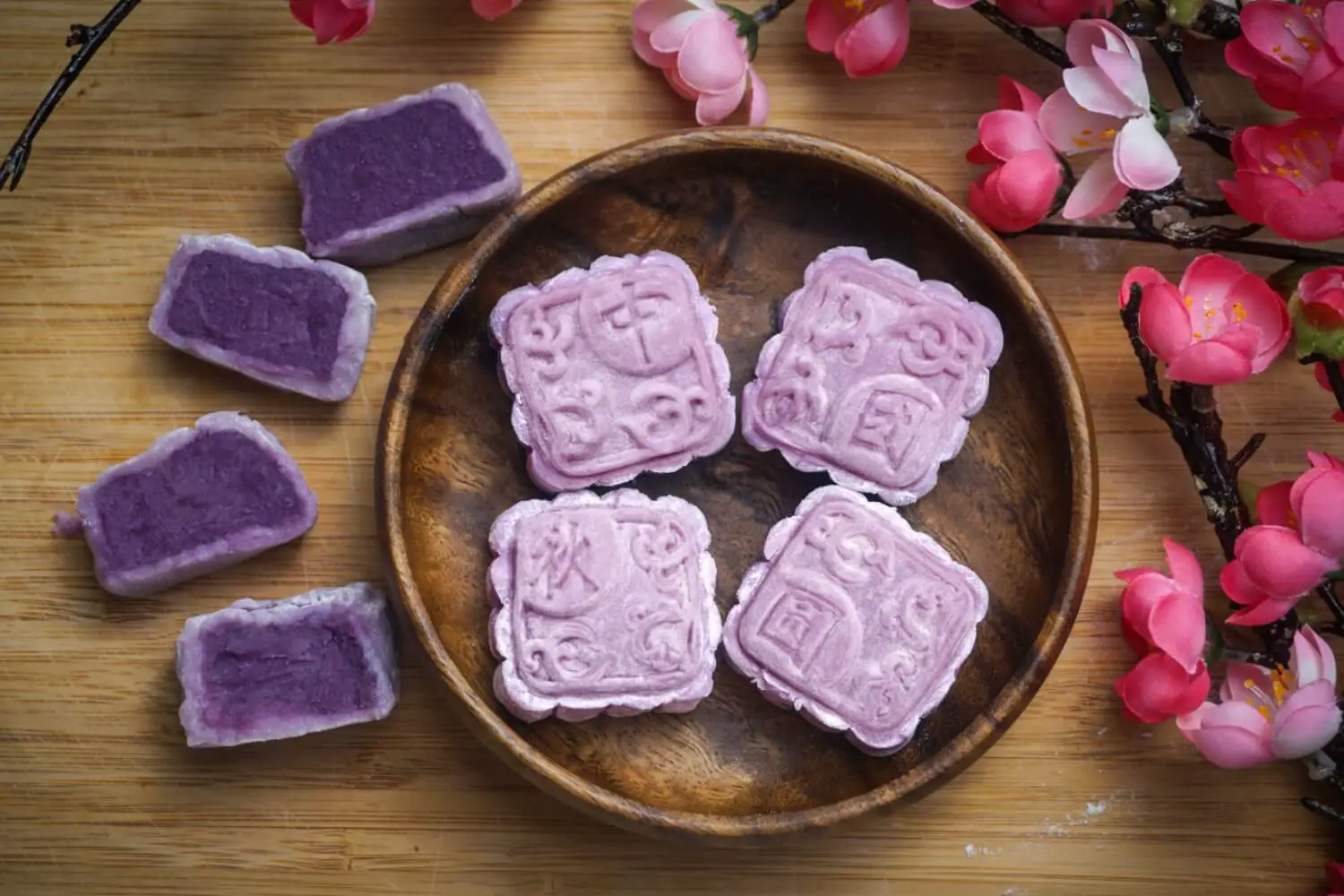
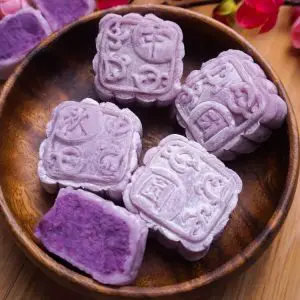
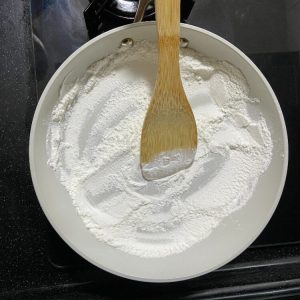
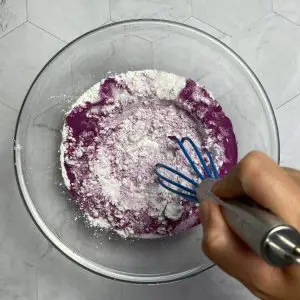
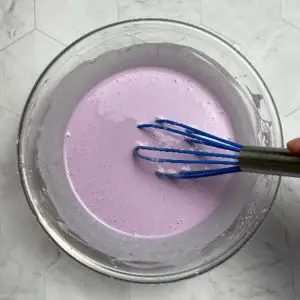
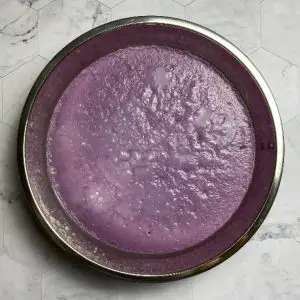
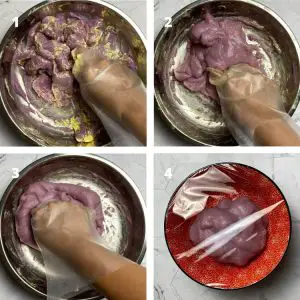
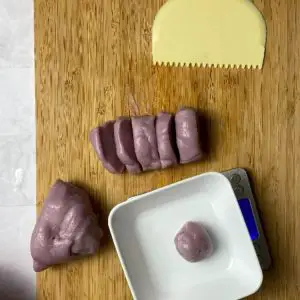
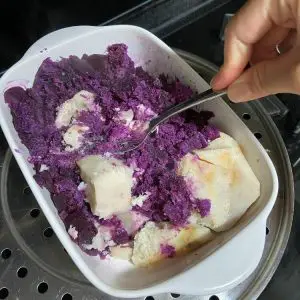
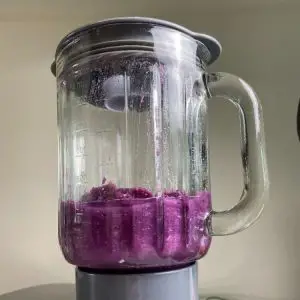
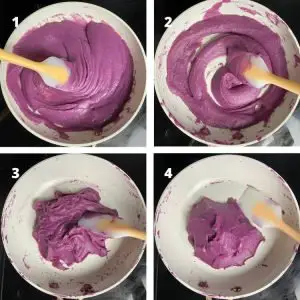

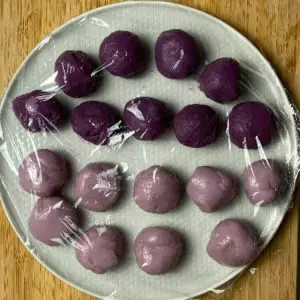
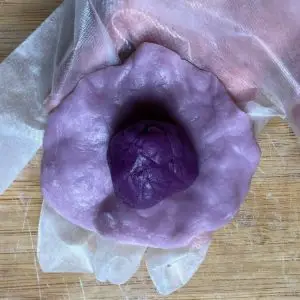
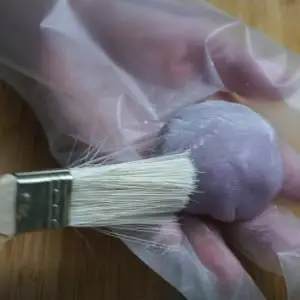
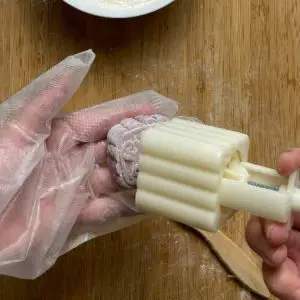
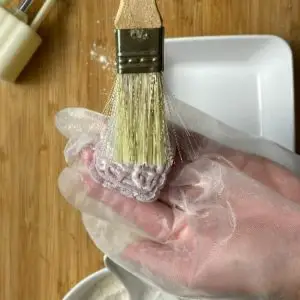
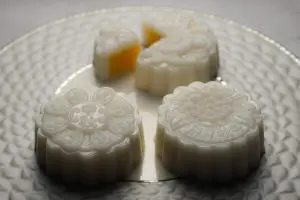 Mango Coconut Jelly Mooncake 芒果椰奶菜燕月饼
Mango Coconut Jelly Mooncake 芒果椰奶菜燕月饼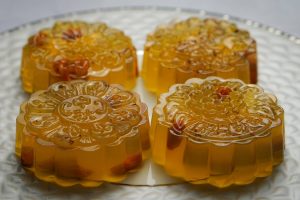 Osmanthus Goji Jelly Mooncake 桂花枸杞菜燕中秋月饼
Osmanthus Goji Jelly Mooncake 桂花枸杞菜燕中秋月饼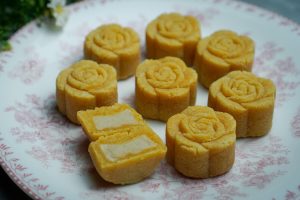
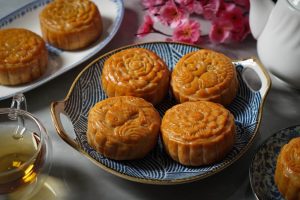


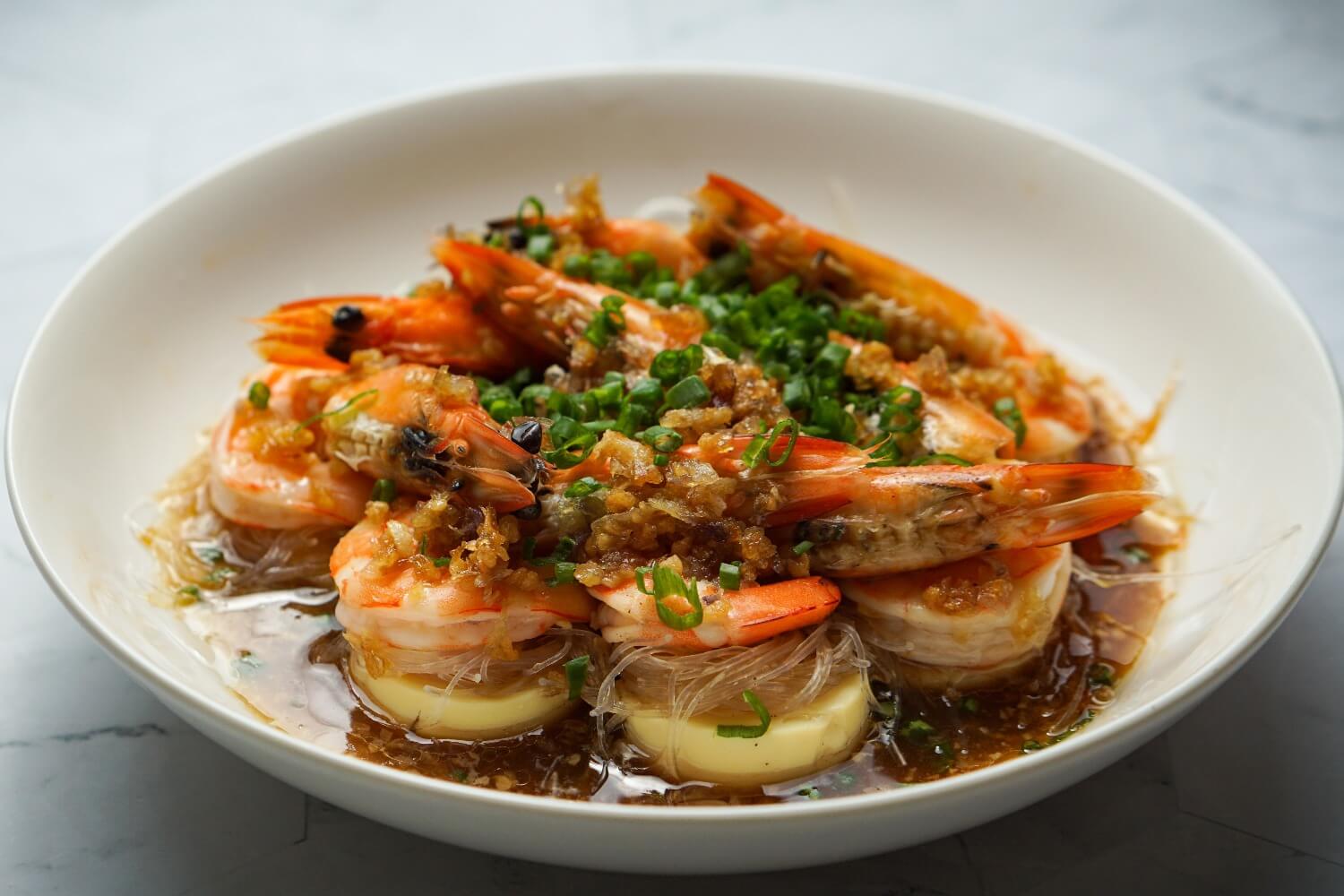
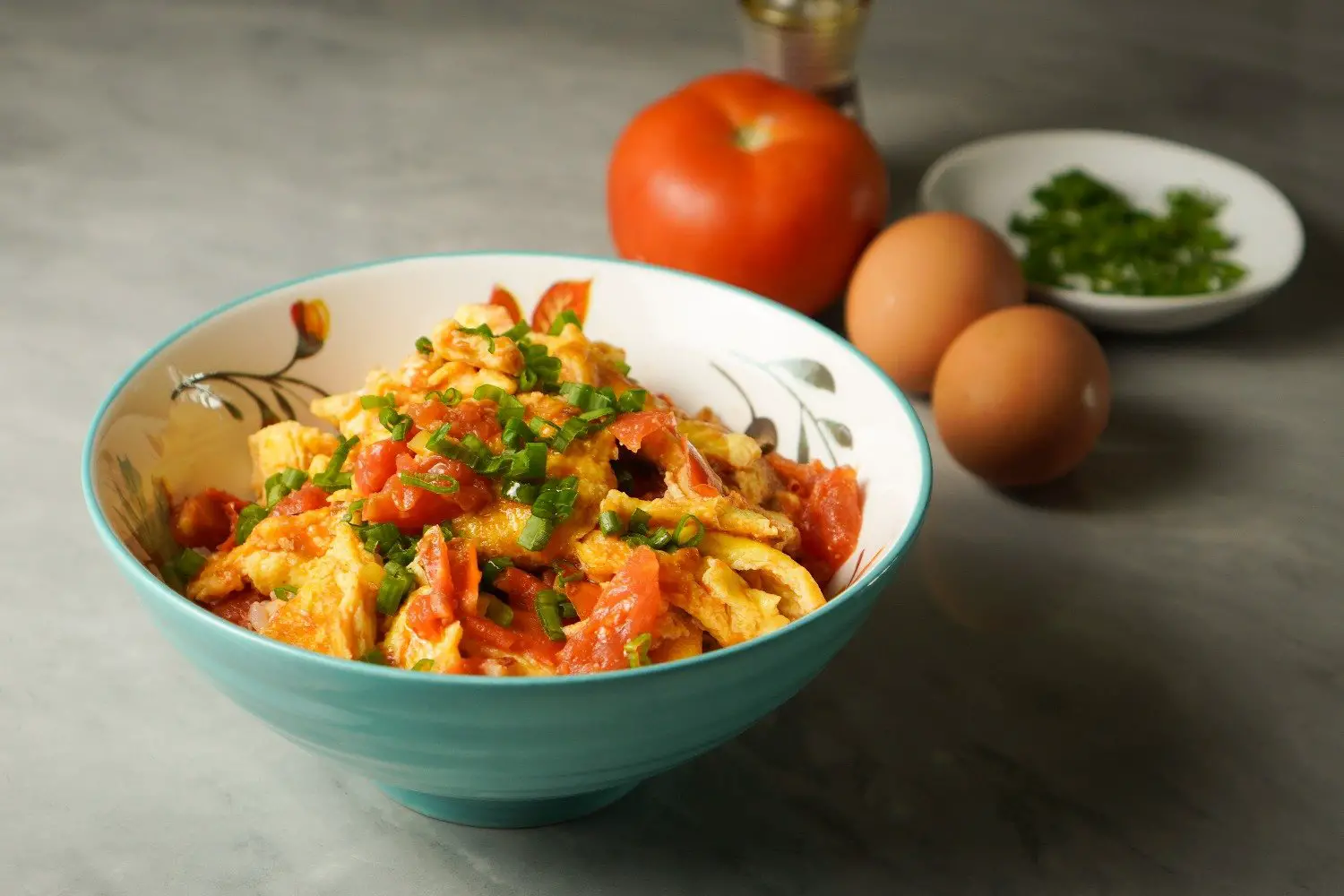
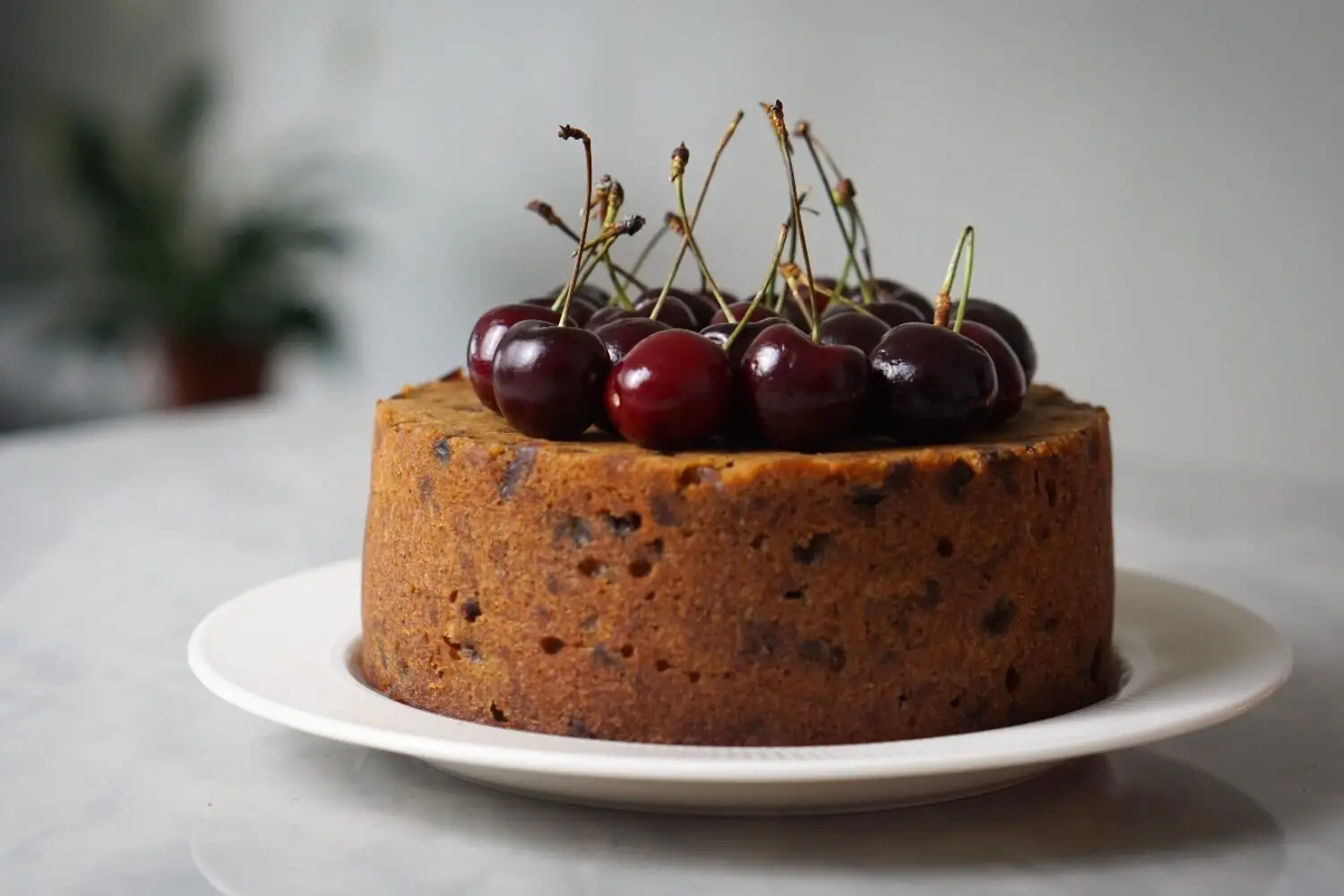



16 September 2022 at 8:59 pm很梦幻的紫色,看了不舍得吃啊😁😊 感谢分享🙏
20 September 2022 at 1:50 pmThanks for visiting Ms Tan!